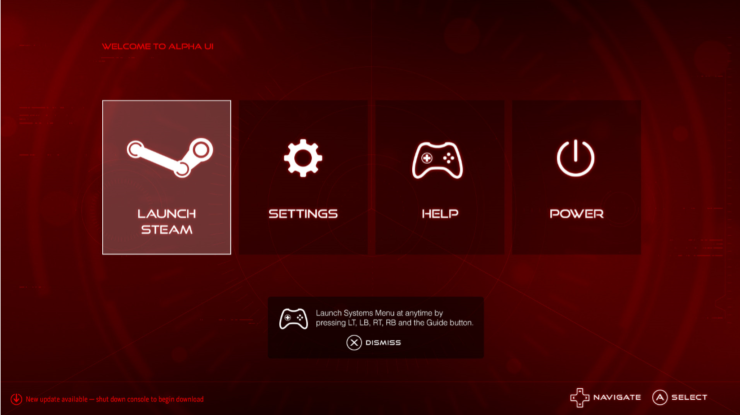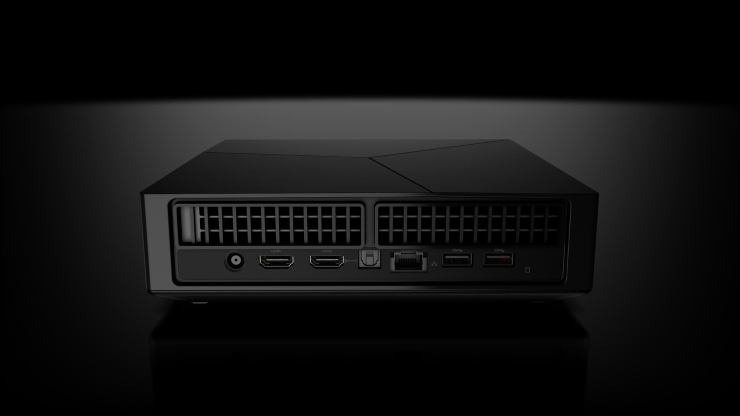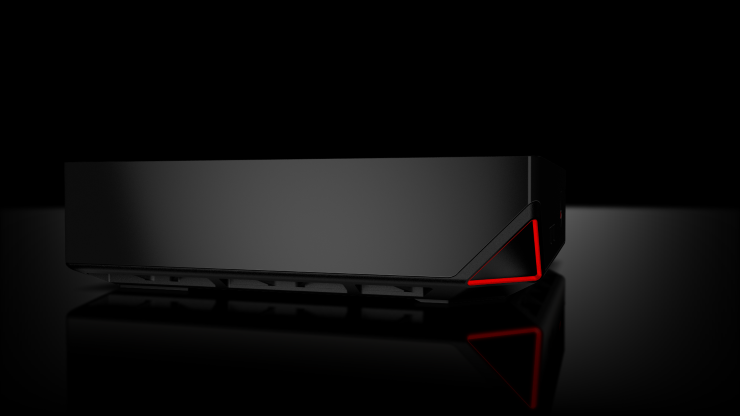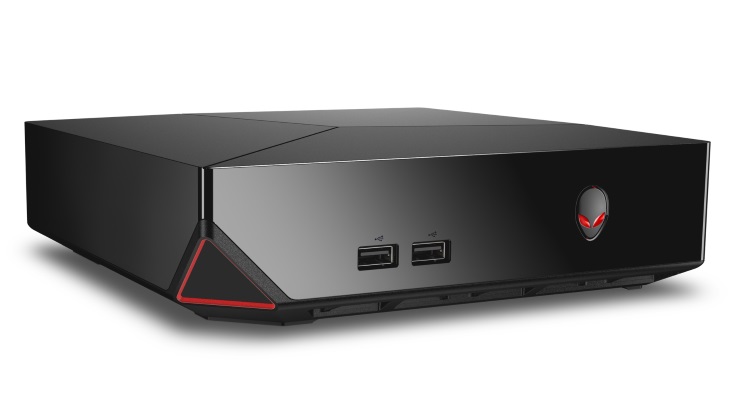To say that I’ve put off writing this review would be an understatement. I’ve got pages of notes written down, and I’m not going to hide behind some form of writer’s block. No, I’ve put off writing this simply because the Alpha is a straight up bizarre piece of tech that, when finished with and returned to Alienware, I will desire to keep, yet one which, at the same time, I can’t wholeheartedly recommend that you go out and buy.
First up, let’s get to the core of what it’s intended for: playing Steam games that are fully controller-enabled, in big picture mode, as a console underneath your TV. That may actually be obvious, but there are some discreet caveats in there that I’m going to break down for you, because I think they are important.
“Fully controller-enabled” is the most important one. I tested the Alpha with all manner of games (and we’ll come to that in due course), but the idea here is that you use the supplied Xbox 360 controller and USB wireless receiver (rather than being internal, it takes up one of the five USB ports – two at the front; two at the back, and one curiously hidden in a compartment under the machine, that I assume is for a wireless mouse/keyboard dongle) to play your games. Booting up Lifeless Planet, I was met with a window that required mouse input to select my resolution and options, before booting. And that’s not an anomaly, actually. Multiple games (The Vanishing of Ethan Carter is another) require mouse input before launching and being playable with a controller. And yes, I know that sounds like the smallest of “first world problems”, but this is a console designed to be used under a TV, next to your Xbox One, PS4 and Wii U – not as a PC you have in your office.

The Alpha boots into a custom Alienware UI, where you’ve got options (resolution, HDMI throughput, etc) and Steam to choose from. Hitting Steam boots to big picture mode, and this is all done with the controller – there’s nary a mouse in sight. Thankfully, there’s a controller solution: holding down RT+RB+LT+LB and then clicking the left stick in, a mouse will appear that you control with the left analog stick. Simple yet effective, this works surprisingly well.
What this amounts to, however, is a very minor inconvenience. Some fidelity is lost using a controller as a mouse, so I grabbed my USB mouse/keyboard receiver, plugged it in, and I’m away – at this point it’s just a PC connected to my TV. But I wonder if I’m the target audience, because (again) the intention here is that this is your Steam box – to play Steam games on. Because of this custom UI and steam big picture integration, you won’t be playing Minecraft (the biggest PC game in the world) without at least booting to the Windows 8 desktop, installing it, and setting up a shortcut in Steam which, in my experience, didn’t work anyway. Nor will you be firing up uPlay or Origin to play any Ubisoft or EA games you might own, either.
Starting to sense a pattern here, I decided that it was time to just boot it to Windows 8, and use it as a gaming PC for my office. It’s a near silent box, which is a treat, and it’s also smaller than a PS4 or Wii U, so it takes up next to no room. In fact, it’s resting on my desk next to me as I type this. Small, inoffensive, quiet – three ticks for me, there.

But it’s not powerful enough. While the Alpha comes in a variety of specifications, the machine we were sent is the i3 with 4GB of RAM and, frankly, that’s just not powerful enough to be what I’d deem a gaming PC. Playing my game of the moment (The Long Dark), it runs beautifully, and I don’t see any way it could actually look better. But playing The Vanishing of Ethan Carter on “high” settings, it frequently drops frames (it goes as low as 9, but regularly 30) and stutters. Likewise, Far Cry 4 was choppy and unpleasant on the high settings. The argument I’d make is simple: if you’re going to drop money on a gaming PC, it needs to run the best games on high, at least, and be pushing 60fps while it does it. For another £40, you could double up to 8GB of RAM and a 1TB HDD (an i5 significantly ups the price), and I’d strongly urge you to do just that, especially if you want to play new games like The Witcher 3 – this Alpha model can’t run that game. Conversely, if you want to get down and dirty with the PC-side of the Alpha, you can get a game that looks as good as a console, but with a much higher frame-rate. You just need to play with the settings.
It also comes littered with software that is slowing it down. Norton may be seen as a lovely pack-in for some, but to experienced users, it’s a resource hog that won’t shut up. In fact, if you boot to Windows 8, the first thing you should plan on doing is removing all the unwanted guff that any store-bought PC comes with.
On the other hand, having an nVidia GTX in the machine means you can grap hold of the nVidia Experience, and run shadowplay for game capture, which is ideal for the budding YouTubers out there, though won’t work with all games. Likewise, the Alpha happily took 1080p/60fps throughput from the Elgato game capture HD60, though it couldn’t handle processing 1080/60 for a live stream. That’s not really a surprise, but I tested it, so I’m telling you the results.

The problem here is that the Alpha isn’t quite ready. Perhaps if the SteamOS was ready and bundled here, all the problems would go away. Perhaps bundling it with a Steam Controller (and getting around the need for a mouse) does the same. But these are all hypothetical ideas that I can’t prove or disprove. What I’m confident of, is that if you pick a higher end model of the Alpha you will get an excellent small-form, quiet-as-a-mouse gaming PC.
Despite everything, I want to keep the Alpha. It fits some of my unique needs supremely well. One power plug and a USB device in a small box and it’s under my TV capturing video with the Elgato running with the Xbox One. Unplug it and it’s back in my office, in Windows 8 (which, for the record, I really do not enjoy using) as a work PC that can run most games on high settings, and can handle most things I can throw at it.
It’s a weird box, almost unfinished, yet full of potential – it is so nearly there. If you’ve £500 to spend on the 8GB model, then I don’t think you’ll regret your purchase. As long as you know you’re still going to need to plug in a mouse and keyboard occasionally (more-so a mouse than keyboard), then this is a very reasonably priced way to get into PC gaming. You’ll need a modicum of knowledge to get past some odd issues, and big picture mode crashed more than a few times, but regardless, the Alpha is a gateway into PC gaming, and that can’t be all bad.
And I’d also like to add a huge caveat to this whole review: if the issues I’ve mentioned can be worked around, then the Alpha will comfortably be the front runner for the Steam Box platform. That’s how much potential there is here. That said, if you can stretch to the high-end models, I’d strongly urge you to do so. It’s incredibly portable and surprisingly affordable, and in a few months this could be a must-have Steam Box for any wannabe PC gamer.






